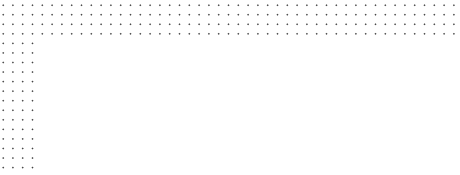Computer Science - Fall 2023 Sophomore
Course # HUSS 2051
6 Credits
Course Description
The course starts by interrogating the very idea of philosophy, exploring various approaches to it and distinguishing it from other disciplines such as science and theology. It discusses the broad global chronology of philosophical thought. The students use logic to investigate the mode of systematic thinking, and examine metaphysics and epistemology, two fundamental topics in philosophy. They also explore questions of ethics, including meta-ethics, normative ethics, and applied ethics during the course. The course helps students to examine the centrality of science in modern cultures and the issues it raises as well as the perils and potentials of new technological avenues such as artificial intelligence and the changing mode of human-nature interactions. The course ends by focusing on the question of “What does it mean to be an educated person?” which will allow students to return to the meaning of reflection and an examined life.
Course Learning Outcomes
At the end of the course, students will be able to:
- Formulate sound arguments to work out logical fallacies in written and oral texts and discussions;
- Review various sources of knowledge to engage with the problem of skepticism in their professional and personal contexts;
- Identify ethical judgements and relate them to ethical theories, which people make in their everyday life;
- Evaluate the relationship of individual with society and state, using concepts of political philosophy in terms of social justice and participation in governance;
- Examine ethical and human implications of increasingly criticized world by exploring its perils and possibilities;
Course Assessment and Grading
|
Item |
Weight |
|
Reflection paper 1 Reflection paper 2 Reflection paper 3 |
30% |
|
Participation |
20% |
|
Oral presentation |
20% |
|
Research paper |
30% |
Course # DMNS 2071
6 Credits
Course description
This course is designed to give students a solid basis for furthering their studies related to the biological sciences by striking a balance between mastery of core concepts and exposure to the breadth of the discipline. Students examine the interrelationships between organisms, their biotic and abiotic environments, and the genetic, evolutionary, and ecological processes governing the patterns we observe in nature. By the end of the course, students are expected to apply biological knowledge to new situations and to integrate concepts from multiple sub-disciplines to solve problems and make predictions about biological systems.
Course Learning outcomes
Upon the completion of the course, the students will be able to:
Unit 1 (Genetics)
- Introduce the sciences, including the scientific method, bioethics, and the fundamental concepts of chemistry and physics that provide a framework within which learners comprehend biological processes.
- Explain the structures, functions, and processes of the cell, the most basic unit of life.
- Introduce the earliest experiments that revealed the basis of genetics through the intricacies of DNA to current applications in the emerging studies of biotechnology and genomics.
Unit 2 (Evolution)
- Explain the core concepts of evolution with examples illustrating evolutionary processes.
- Explain in what way each of the four major mechanisms of evolution (mutation, genetic drift, selection, gene flow) may contribute to adaptation, divergence, speciation and/or extinction.
- Describe evolutionary processes in the context of genetics.
Unit 3 (Ecology)
- Explore the diversity life by distinguishing specific characteristics of every group of organisms.
- Discuss emerging phylogenetic relationships and its implication to sustainable ecosystems.
- Explain the core concepts of botany, plant life and processes.
- Discuss the form and function of the human (animal) body, including body systems and processes.
- Explain ecological concepts highlighting localized, real-world issues of conservation and biodiversity that relates to Central Asia.
Course Assessment and Grading
|
Item |
Weight |
|
Genetics exam |
20% |
|
Evolution exam |
20% |
|
Ecology exam |
20% |
|
Research work |
40% |
Course # COMP 2051E
6 Credits
Course Description
Welcome to the ultimate training ground for mastering the art of Object-Oriented Programming for back-end development using Java Spring Framework and creating RESTful applications that power the modern web. This specialized course is designed to equip you with the knowledge and skills needed to become a proficient software and back-end developer, focusing on building RESTful APIs with Object-Oriente Programming principles using Java Spring Framework. By the end of this course, you will have the expertise to design, develop, and deploy RESTful APIs using Object-Oriented Java programming language with Spring Framework.
Course Learning Outcomes
By the completion of the course, the students should be able to:
- Design and implement well-structured and maintainable code following OOP principles.
- Use Java programming language, including its syntax, data types, and control structures, specifically tailored for back-end development.
- Use Java Spring Framework, with a focus on Spring Boot and Spring Web, for developing robust and scalable back-end applications.
- Design and build RESTful APIs that adhere to best practices, leveraging their knowledge of HTTP methods, status codes, and request/response handling.
- Integrate databases into their applications using Spring Data JPA and Hibernate, effectively modeling and managing data.
- Implement security measures, including authentication and authorization, using Spring Security to protect RESTful APIs from unauthorized access.
- Designing, developing, and deploying RESTful applications using Java Spring Framework, preparing them for real industry scenarios. Test Java programs using JUnit testing framework within Unit and Integration testing phases.
- Apply Design Patterns to achieve modularity.
Course Assessments and Grading
|
Item |
Weight |
|
Problem Sets (9 PS’s) |
25% |
|
Capstone Project |
25% |
|
Two Quizzes |
10% |
|
Mid-Term Exam |
15% |
|
Final Exam |
20% |
|
Reading Overview Quizzes (15) |
5% |
Course # COMP 2081
6 Credits
Course Description
Do you want to get started in the world of coding and build websites as a career? This certificate, designed by the software engineering experts at Meta—the creators of Facebook and Instagram, will prepare you for a career as a front-end developer. Upon completion, you’ll get access to the Meta Career Programs Job Board—a job search platform that connects you with 200+ employers who have committed to sourcing talent through Meta’s certificate programs, as well as career support resources to help you with your job search. By the end, you’ll put your new skills to work by completing a real-world project where you’ll create your own front-end web application.
Course Learning Outcomes
Upon the completion of this course, students should be able to:
- Create a responsive website using HTML to structure content, CSS to handle visual style, and JavaScript to develop interactive experiences.
- Learn Bootstrap CSS Framework to create webpages and work with GitHub repositories and version control.
- Create robust and reusable components with advanced techniques and learn different patterns to reuse common behavior.
- Interact with a remote server and fetch and post data via an API.
- Seamlessly test React applications with React Testing Library.
- Integrate commonly used React libraries to streamline your application development.
Course Assessments and Grading
|
Item |
Weight |
|
Program series -- 1 |
5% |
|
Program series – 2 |
15% |
|
Program series – 4 |
15% |
|
Program series – 5 |
15% |
|
Program series – 6 |
20% |
|
Program series – 8 |
20% |
|
Attendance |
10% |
Course # DMNS 2012
6 Credits
Course Description
Discrete Mathematics for Computer Science is an introductory course designed to provide a foundational understanding of the mathematical concepts and techniques used in computer science. The course covers sets, relations, functions, and other fundamental mathematical concepts used in computer science, such as logical reasoning, induction, recursion, counting, graphs, and trees. This course also covers the applications of concepts in computer science such as algorithms, their reliability and complexity.
Course Learning Outcomes
By the end of this course, students will be able to:
- Determine whether a propositional formula or a statement in predicate logic is true or false for a given truth assignment.
- Apply propositional logic to solve puzzles and create system specifications using natural language.
- Identify the different types of sets, relations, and functions.
- Evaluate the correctness and procedures of a mathematical proof.
- Create a mathematical proof or disproof of a given statement using methods such as truth tables, rules of inference, natural deduction, and semantic tableaux.
- Write algorithms and determine their complexity.
- Use mathematical induction and recursion to prove statements.
- Model problems using graphs and trees.
- Use discrete mathematics to model real-world problems.
- Communicate effectively about discrete mathematics concepts.
Course Assessments and Grading
|
Item |
Weight |
|
Homework |
15% |
|
Quizzes |
15% |
|
Class Participation |
10% |
|
Midterm Exam |
30% |
|
Final Exam |
30% |
Course # HUSS 1080
0 Credits
Course Description
The purpose of physical education is to strengthen health and develop the physical and mental abilities of students. Physical exercises and sports games are the way to a powerful and functional body, clear mind and strong spirit. The course is both practical and theoretical, it covers basic concepts of anatomy and physiology as well as health and safety requirements.
Course Learning Outcomes
By the end of this course, students will be able to:
- perform a range of physical activities
- describe health and safety requirements for a range of physical activities
- describe the role and progress of sport in Central Asia
- chose an appropriate physical activities program for their age and gender
- identify tiredness and its symptoms to control the body during athletic exercises
- describe the technique of running for a long and a short distance and jumping
- accomplish running for a short and a long distance and jumping according to all necessary norms
- describe the rules of a range of sports games
- participate in a range of sports games according to their rules and techniques
Course Assessments and Grading
Course grade PASS/FAIL
|
Controlling exercises and testing |
Normative |
|||||
|
Boys |
Girls |
|||||
|
5 |
4 |
3 |
5 |
4 |
3 |
|
|
Running – 60m (minutes and seconds) |
8,6 |
9,4 |
10,2 |
9,6 |
10,2 |
10,6 |
|
Running – 100m (minutes and seconds) |
14.0 |
14.2 |
14.6 |
16.0 |
16.3 |
17.0 |
|
ABS – 30 seconds |
25 |
23 |
21 |
23 |
21 |
18 |
|
Long distance running – 1000m |
3.50 |
4.00 |
4.10 |
4.30 |
4.40 |
4.50 |
|
Long distance running – 2000m |
|
|
|
10.3 |
12.1 |
13.10 |
|
Long distance running – 3000m |
14.0 |
16.00 |
17.00 |
|
|
|
|
Push up on the cross bar (турник) |
20 |
17 |
15 |
|
|
|
|
Jumping with running (m,sm) |
4.45 |
4.20 |
3.70 |
3.60 |
3.35 |
3.10 |
|
Jumping from the stand position(m,sm) |
2.20 |
2.00 |
1.90 |
2.00 |
1.90 |
1.60 |



